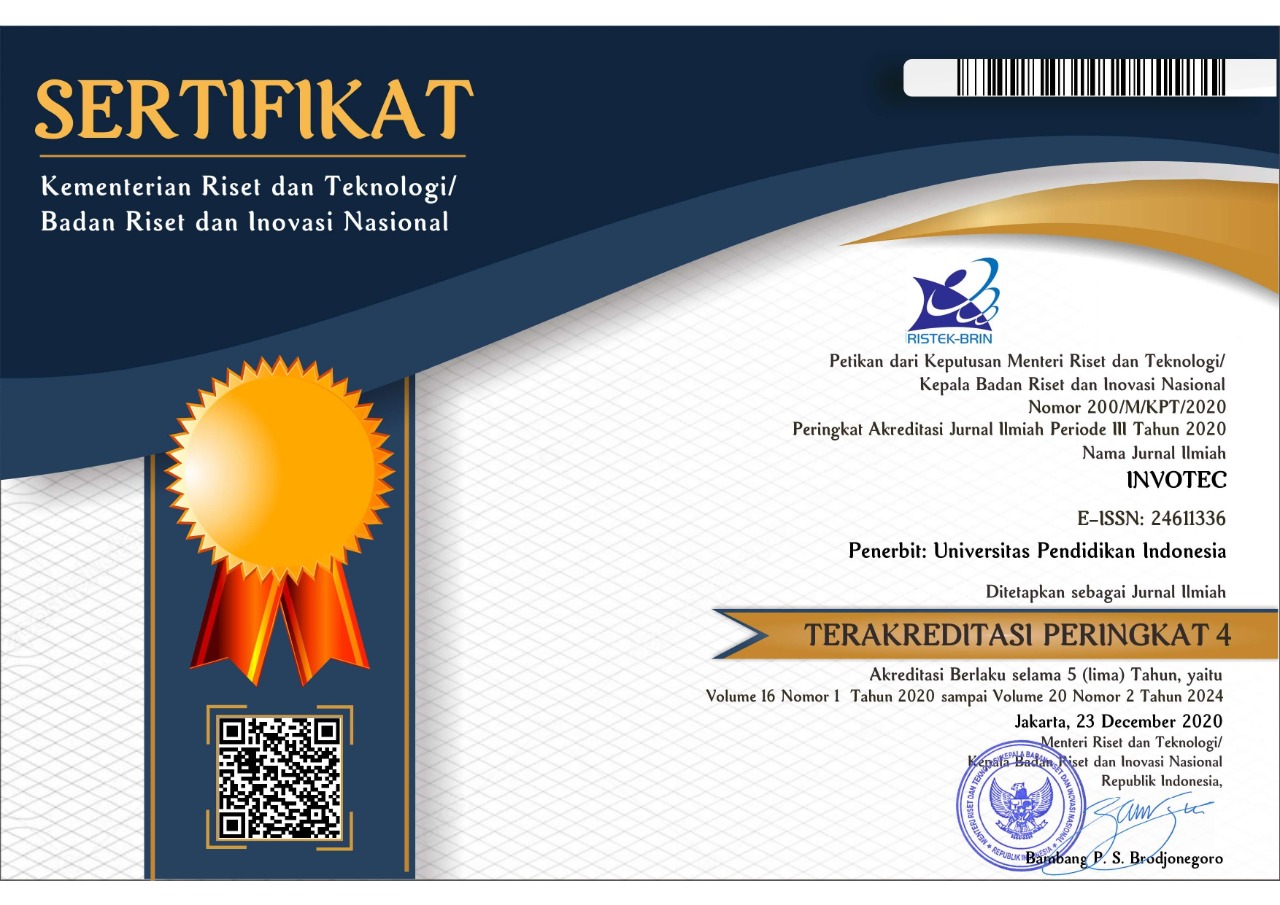Analysis of BIM Development and Its Competencies: A Systematic Literature Review
Abstract
Building Information Modeling (BIM) has become an important technology in the construction industry, driving efficiency, collaboration, and better project information management. However, the gap between workforce competencies and industry needs remains a major challenge in implementing BIM effectively. Using a Systematic Literature Review (SLR), this study aims to identify in greater depth the key skills required by BIM professionals by reviewing recent academic publications through the PRISMA methodology. Analysis results show that in addition to technical skills in BIM software, professionals must also possess competencies in collaboration, communication, project administration, and strategic leadership. In developed countries, BIM adoption is driven by government policies and standardized regulations, whereas in developing and underdeveloped countries, BIM implementation still faces challenges in workforce training and industry awareness.
Keywords
Full Text:
PDFReferences
Alieh, L., Hosseini, M. R., Martek, I., Wu, W., & Arashpour, M. (2024). Bridging the gap: assessing the person-organization fit between BIM education and industry expectations in Australia. Engineering, Construction and Architectural Management.
Ariono, B., Wasesa, M., & Dhewanto, W. (2022). The Drivers, Barriers, and Enablers of Building Information Modeling (BIM) Innovation in Developing Countries: Insights from Systematic Literature Review and Comparative Analysis. Buildings, 12(11), 1912.
Ariyachandra, M. R. M. F., Jayasena, H. S., & Perera, B. A. K. S. (2022). Competencies Expected from an Information Manager Working in BIM Based Projects. International Journal of Construction Education and Research, 18(1), 49–66.
Corrêa, J., Alves, J. L., Homrich, A. S., & de Carvalho, M. M. (2025). Evolving skillsets of architecture, engineering and construction sector: unveiling the interplay between project management, BIM, strategic and operational skills. Engineering, Construction and Architectural Management.
Dao, T. N., Chen, P. H., & Nguyen, T. Q. (2020). Enhancement of mutual recognition and mobility of BIM experts in ASEAN countries. Sustainability (Switzerland), 12(18), 1–19.
Famakin, I. O., Othman, I., Kineber, A. F., Oke, A. E., Olanrewaju, O. I., Hamed, M. M., & Olayemi, T. M. (2023). Building Information Modeling Execution Drivers for Sustainable Building Developments. Sustainability, 15(4), 3445.
Heryanto, S., Subroto, G., & Rifa’ih. (2020). Kajian Penerapan Building Information Modelling (BIM) Di Industri Jasa Konstruksi Indonesia. Journal of Architecture Innovation, 4(2), 193–212.
Hosein, M. R. Z. (2023). BIM implementation in architectural practices : towards advanced collaborative approaches based on digital technologies.
Jiang, R., Wu, C., Lei, X., Shemery, A., Hampson, K. D., & Wu, P. (2021). Government efforts and roadmaps for building information modeling implementation: lessons from Singapore, the UK and the US. Engineering, Construction and Architectural Management.
Kennedy, G. W., Sunday, S. E., Pandey, D., Kabari, A. D., Pandey, B. K., George, A. S., & Dadheech, P. (2024). Building Information Modeling (pp. 305–331). IGI Global.
Kineber, A. F. (2023). Building Information Modelling Implementation Model for Sustainable Building Projects in Developing Countries: A PLS-SEM Approach. Sustainability, 15(12), 9242.
Li, N., Han, Y., & Gao, F. (2024). Theory and practice of BIM skills of construction management professional based on conceive–design–implement–operate engineering teaching mode. Computer Applications in Engineering Education.
Li, Y., Li, Y., & Ding, Z. (2024). Building Information Modeling Applications in Civil Infrastructure: A Bibliometric Analysis from 2020 to 2024. Buildings, 14(11), 3431.
Liu, Z., Lu, Y., Nath, T., Wang, Q., Tiong, R. L. K., & Peh, L. L. C. (2021). Critical success factors for BIM adoption during construction phase: a Singapore case study. Engineering, Construction and Architectural Management.
Mao, W. (2024). BIM Driving Innovation in Construction Industry: Advancements in Building Lifecycle Management and Facility Management. Advances in Economics, Management and Political Sciences, 121(1), 1–6.
Mirhosseini, S. A., Mavi, R. K., Mavi, N. K., Abbasnejad, B., & Rayani, F. (2020). Interrelations among Leadership Competencies of BIM Leaders: A Fuzzy DEMATEL-ANP Approach. Sustainability, 12(18), 7830.
Musharavati, F. (2023). Optimized Integration of Lean Construction, Building Information Modeling, and Facilities Management in Developing Countries: A Case of Qatar. Buildings.
Ndwandwe, M., Kuotcha, W., & Mkandawire, T. (2024). Organizational Readiness for Building Information Modeling Implementation in Malawi: Awareness and Competence. Buildings, 14(8).
Nguyen, T. A. (2021). Competence-targeted education for bim professionals: A case example of the vietnamese construction industry. Engineering Journal, 25(7), 147–156.
Nguyen, T. P. T., Nguyen, T. A., Do, S. T., & Nguyen, V. T. (2023). Developing a structural model of stakeholders’ behavior toward BIM adoption in construction enterprises. The International Journal of Construction Management.
Obi, L., Omotayo, T., Ekundayo, D., & Oyetunji, A. K. (2022). Enhancing BIM competencies of built environment undergraduates students using a problem-based learning and network analysis approach. Smart and Sustainable Built Environment.
Oraee, M., Hosseini, M. R., & Edwards, D. J. (2025). Quantitative insights into collaboration in BIM-enabled projects: a PLS-SEM approach. Engineering, Construction and Architectural Management.
Page, M. J., Moher, D., & McKenzie, J. E. (2022). Introduction to PRISMA 2020 and implications for research synthesis methodologists. Research Synthesis Methods, 13(2), 156–163.
Roy, A. F. V, & Firdaus, A. (2020). Building Information Modelling in Indonesia: Knowledge, Implementation and Barriers. 25(2), 199–217.
Rui, S., Makanae, K., Fujiu, M., & Morisaki, Y. (2024). SWOT-AHP Analysis of BIM Technology Utilization in the Japanese Construction Industry. Buildings, 14(11), 3549.
Saipudin, N. A., & Ishak, N. (2024). A bibliometric analysis of building information modeling (bim) integration in industrialized building systems (ibs): trends, gaps, and future directions. International Journal of Innovation and Industrial Revolution, 6(19), 176–190.
Sampaio, Alcínia Zita, Sequeira, P., Gomes, A., & Sánchez-Lite, A. (2022). BIM Methodology in Structural Design: A Practical Case of Collaboration, Coordination, and Integration. Buildings, 13(1), 31.
Sampaio, Alcı́nia Zita, Azevedo, G., & Gomes, A. (2023). BIM Manager Role in the Integration and Coordination of Construction Projects. Buildings, 13(8), 2101.
Shojaei, Reyhaneh S., Oti-Sarpong, K., & Burgess, G. (2023). Leading UK Construction Companies’ Strategies to Tackle BIM Training and Skills Challenges. International Journal of Construction Education and Research, 19(4), 383–404.
Shojaei, Reyhaneh Sadat, Oti-Sarpong, K., & Burgess, G. (2022). Enablers for the adoption and use of BIM in main contractor companies in the UK. Engineering, Construction and Architectural Management.
Takyi-Annan, G. E., & Zhang, H.-J. (2023). A bibliometric analysis of building information modelling implementation barriers in the developing world using an interpretive structural modelling approach. Heliyon, 9.
Tan, S., Ayalp, G. G., Tel, M. Z., Serter, M., & Metinal, Y. B. (2022). Modeling the Critical Success Factors for BIM Implementation in Developing Countries: Sampling the Turkish AEC Industry. Sustainability, 14(15), 9537.
Telaga, A. S. (2018). A review of BIM (Building Information Modeling) implementation in Indonesia construction industry. IOP Conference Series: Materials Science and Engineering, 352(1).
Waqar, A., Othman, I., Hayat, S., Radu, D., Khan, M. B., Galatanu, T. F., Almujibah, H. R., Hadzima-Nyarko, M., & Benjeddou, O. (2023). Building Information Modeling—Empowering Construction Projects with End-to-End Life Cycle Management. Buildings.
Yan, B., Li, M., Zhang, J., Chang, H., Ma, C., & Li, F. (2024). Adherence to PRISMA-A and reporting was suboptimal in meta-analysis abstracts on drug efficacy for tumors: a literature survey. Journal of Clinical Epidemiology, 111506.
Yilmaz, S., Kumar, D., Hada, S., Demirkesen, S., Zhang, C., & Li, H. (2024). A PMBOK-based construction cost management framework for BIM integration in construction projects. The International Journal of Construction Management, 1–15.
Zakariyyah, K. I., John, I. B., & Ijaola, I. A. (2021). Cultural orientations and strategic capability for the adoption of building information modeling in construction firms. Engineering Reports, 3(11),
Zhou, D., Pei, B., Li, X., Jiang, D., & Lin, W. (2024). Innovative BIM technology application in the construction management of highway. Dental Science Reports, 14(1).
Zhou, S., Rong, Y., Pan, M., Zuo, J., Tu, B., & Dong, N. (2024). Understanding Current Demand for BIM Professionals in China through Recruitment Data Mining. Journal of Management in Engineering, 40(3).
Zhou, X., & Wang, Y. (2023). Understanding competency requirements in the context of AEC industry informatization: policy insights from China. Engineering, Construction and Architectural Management.
DOI: https://doi.org/10.17509/invotec.v21i1.82627
Refbacks
- There are currently no refbacks.
Copyright (c) 2025 INVOTEC

This work is licensed under a Creative Commons Attribution-ShareAlike 4.0 International License.
This journal provides immediate open access to its content on the principle that making research freely available to the public supports a greater global exchange of knowledge.

This work is licensed under a Lisensi Creative Commons Atribusi-BerbagiSerupa 4.0 Internasional.




